Report: General Motors Business Environment and Strategic Analysis
VerifiedAdded on 2023/02/02
|10
|810
|48
Report
AI Summary
This report provides an overview of the business environment of General Motors (GM), a public limited company. It begins by defining the business environment and its influencing factors, including both internal elements like employees and management, and external macro factors such as political, technological, legal, and economic conditions. The report then explores different types of organizations, focusing on public limited companies like GM, and their objectives. It delves into the positive and negative impacts of various macro factors on GM's operations, such as political instability, technological advancements, and economic fluctuations. A SWOT analysis is conducted to identify GM's strengths and weaknesses, alongside opportunities and threats in the market. The interrelation of GM's internal strengths and weaknesses with external factors is discussed, using examples like the company's withdrawal from the Indian market. Finally, the report concludes that GM operates within a dynamic business environment, significantly affected by both internal and external factors, emphasizing the importance of strategic analysis for its continued success.
1 out of 10
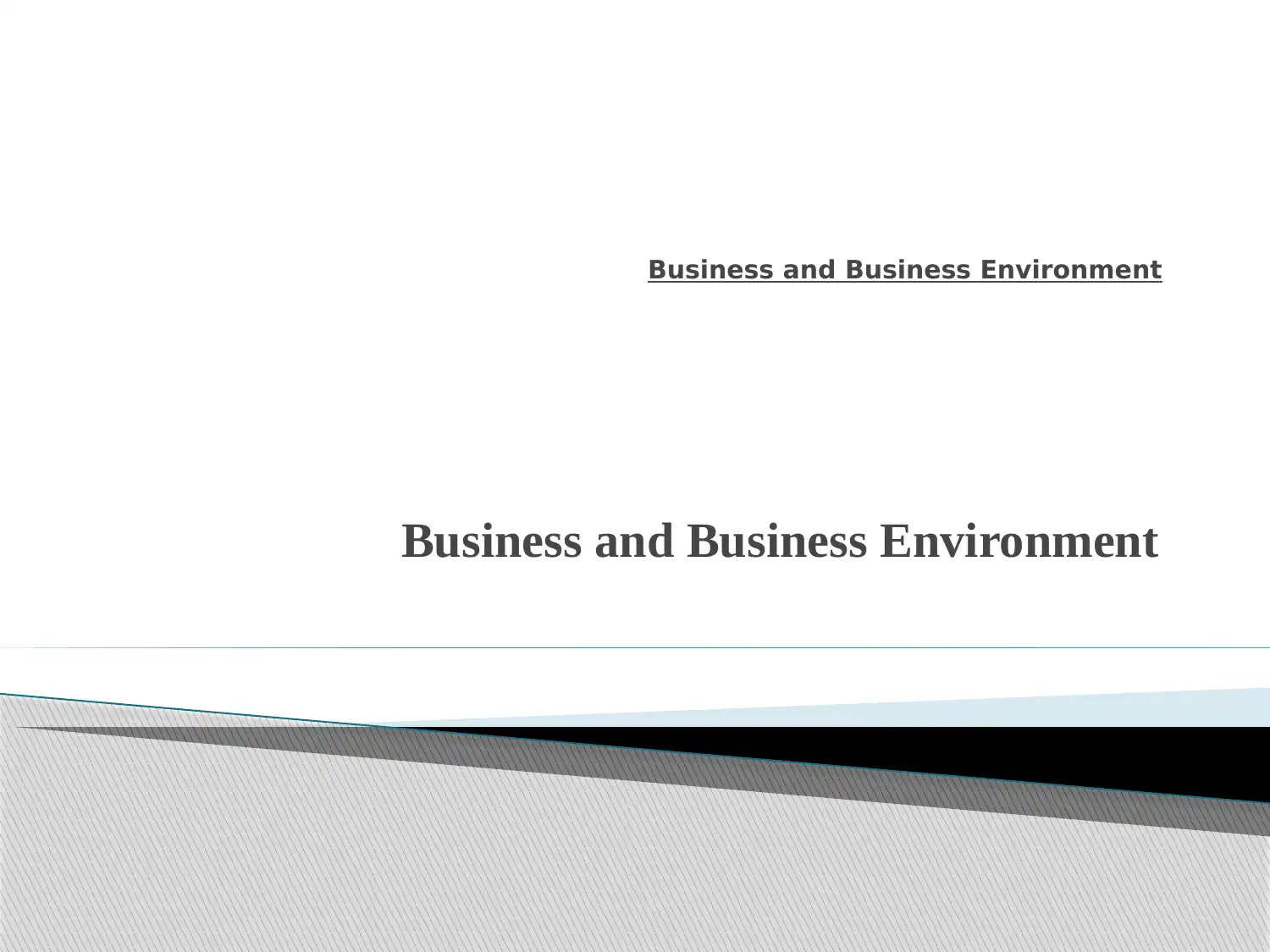
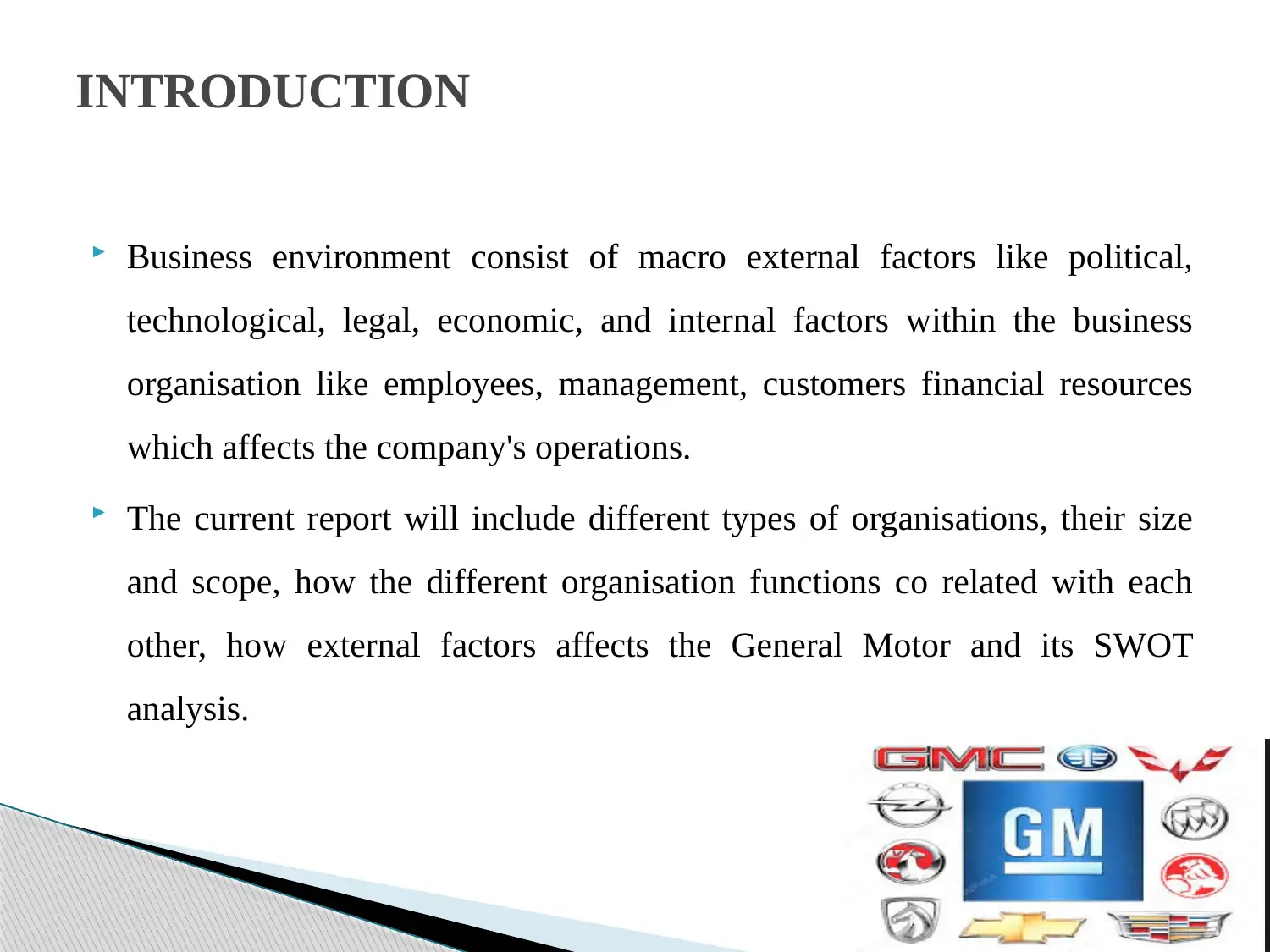
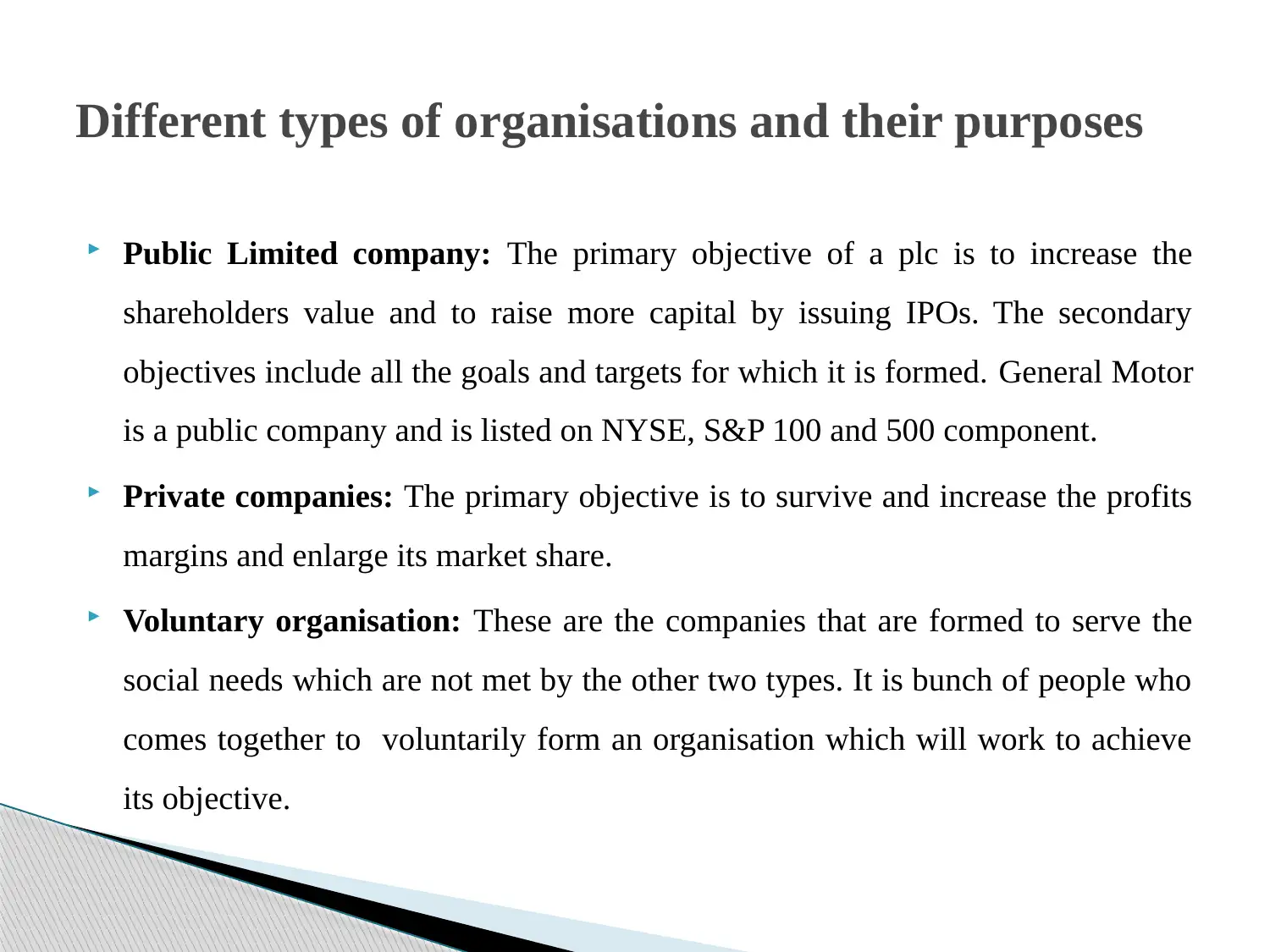

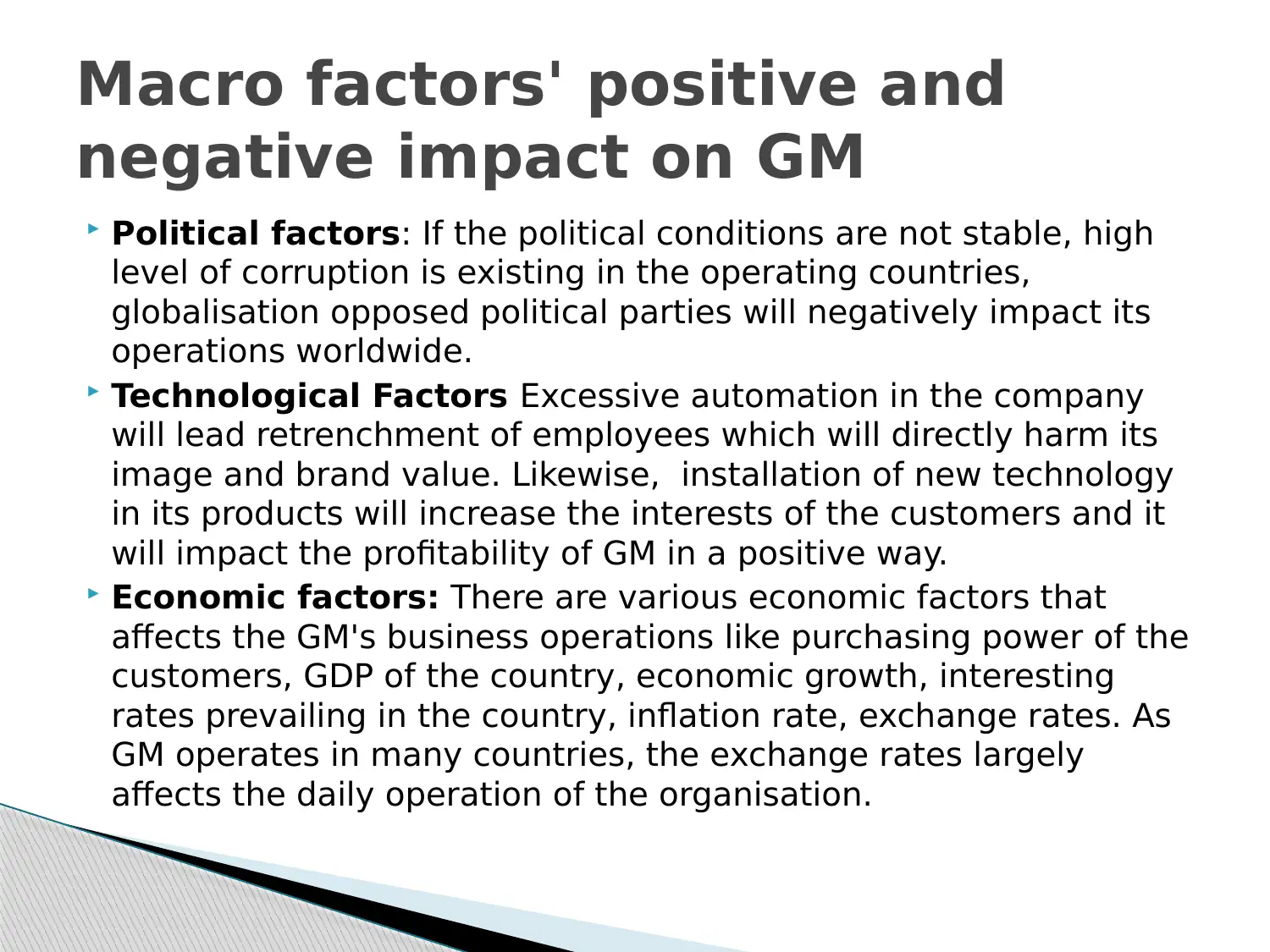
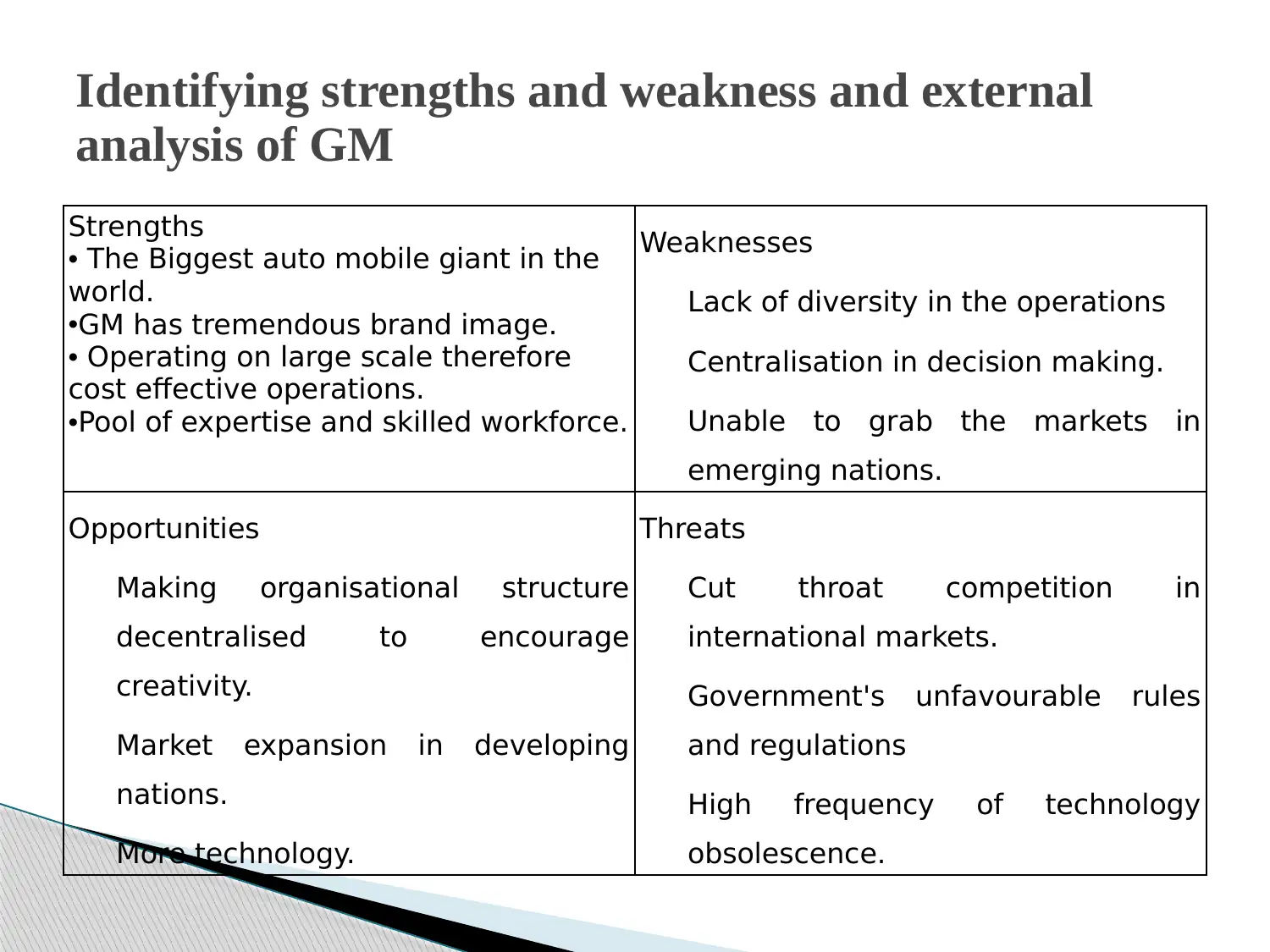
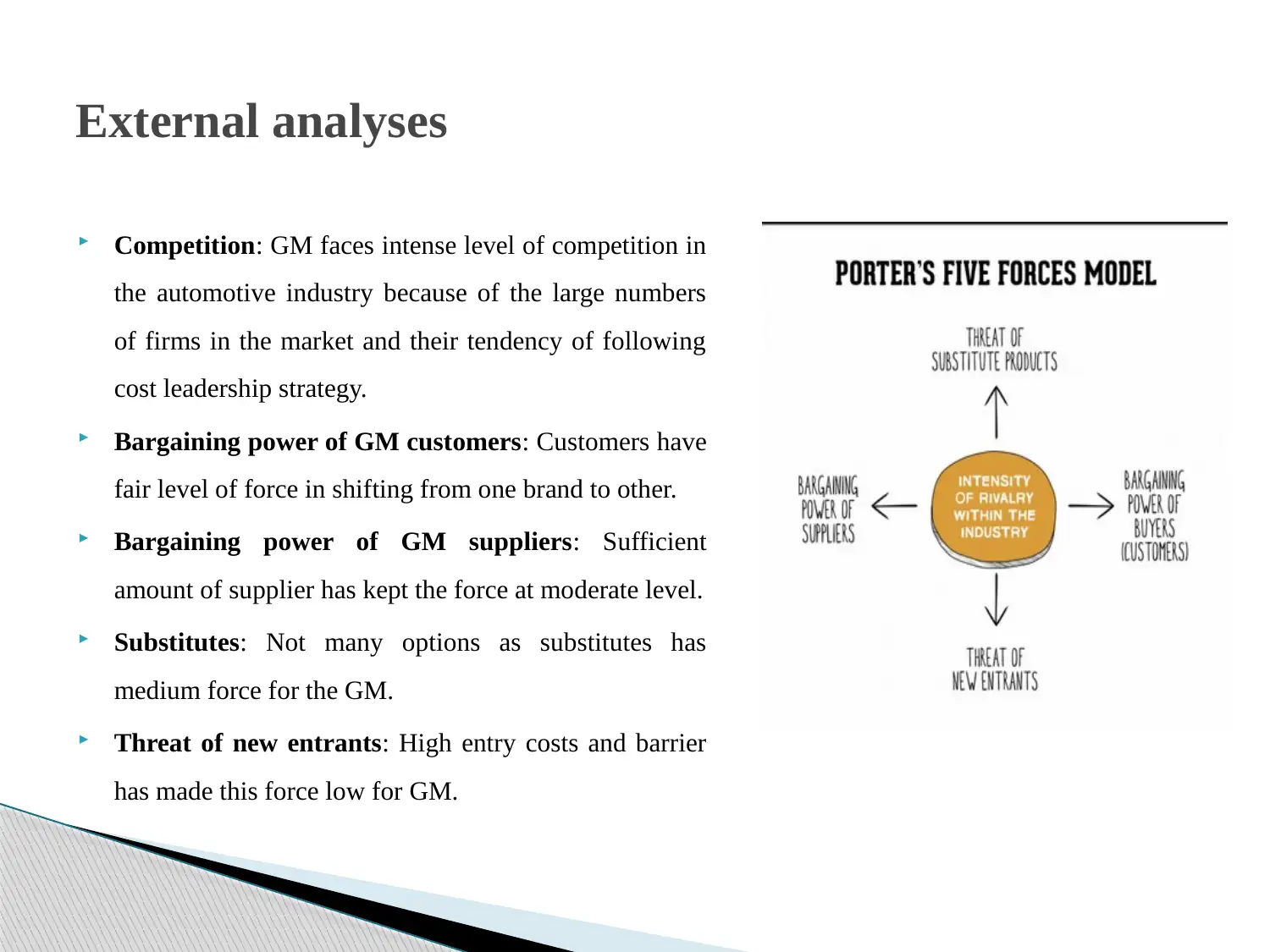
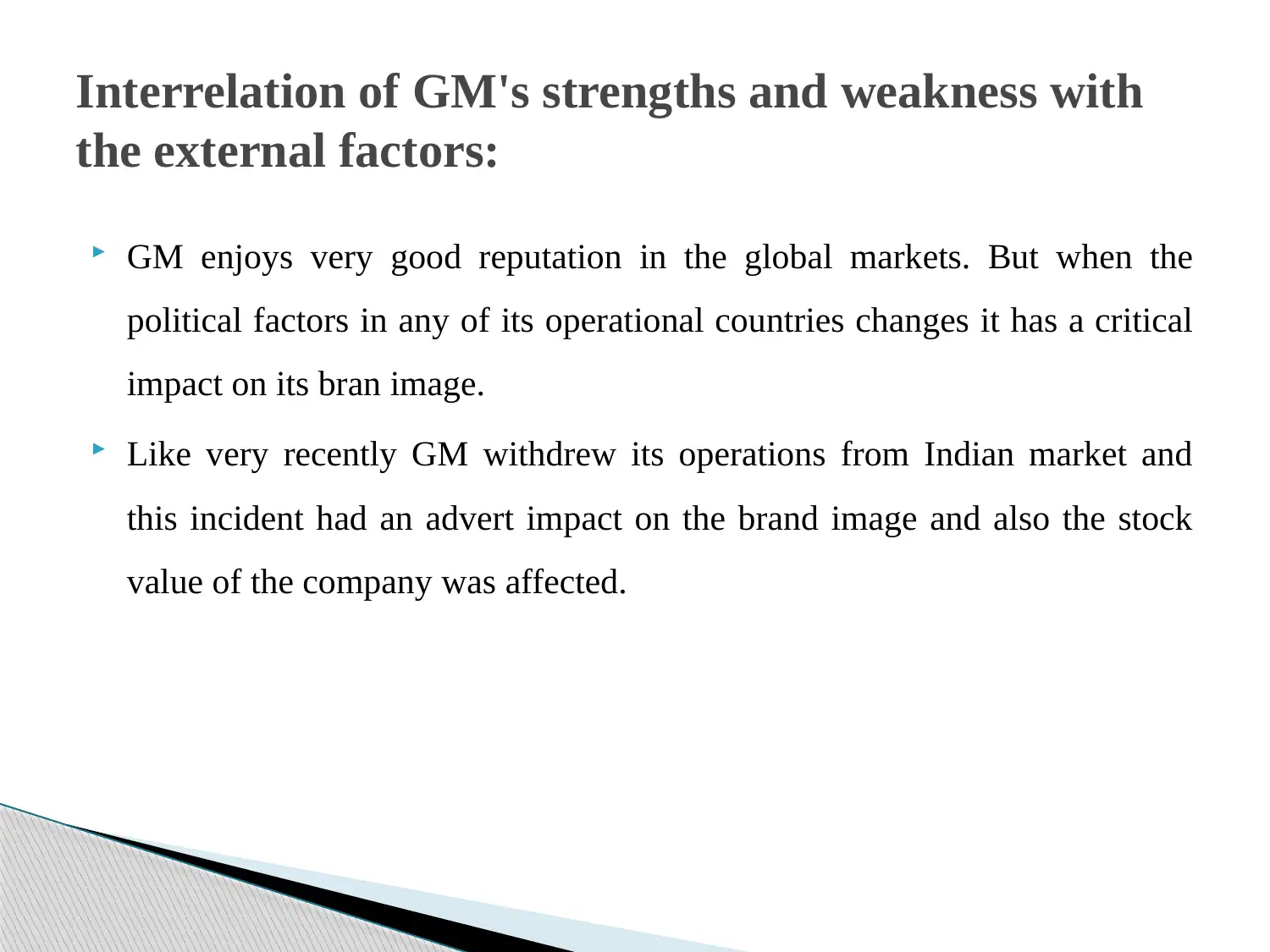
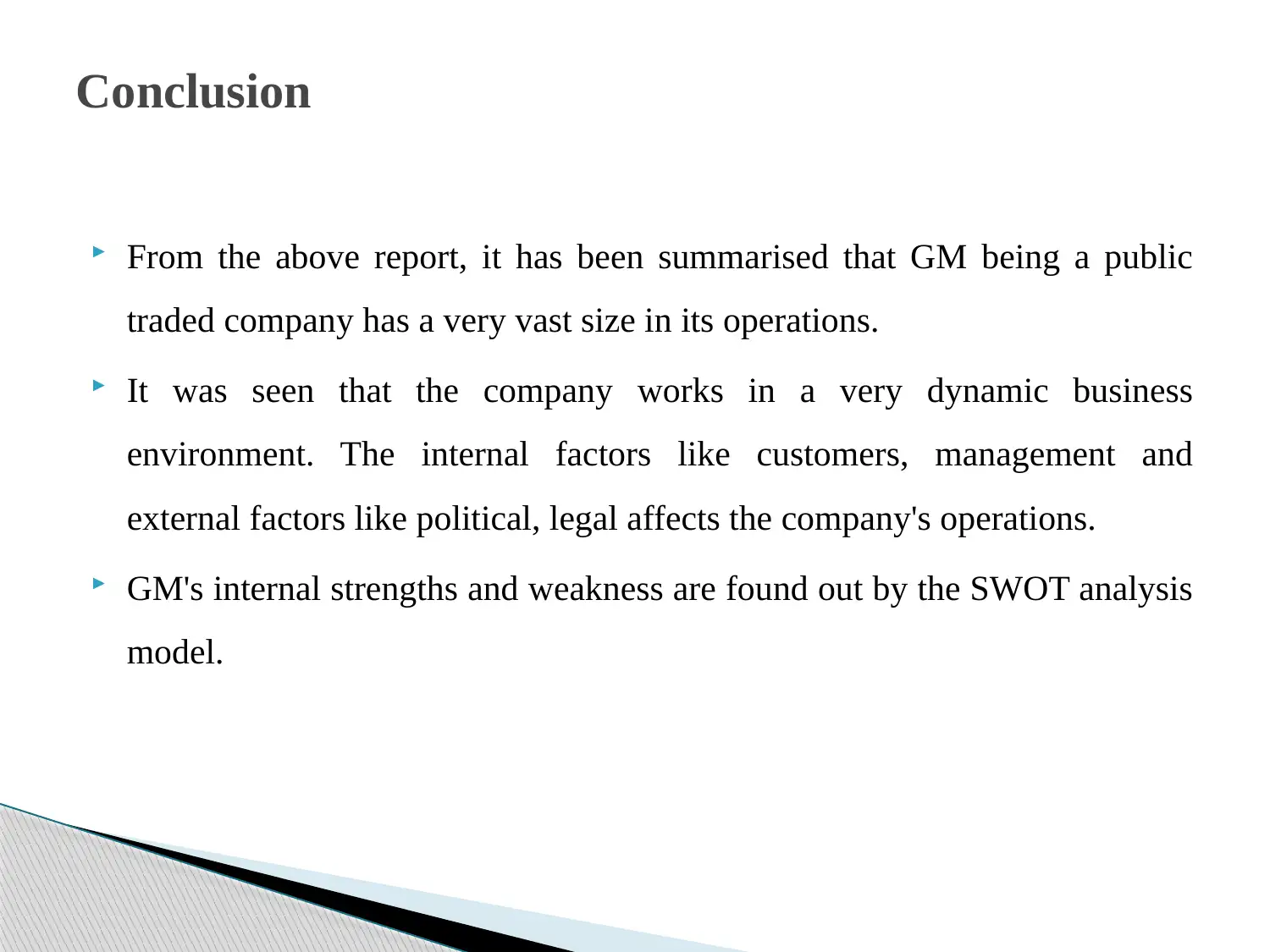
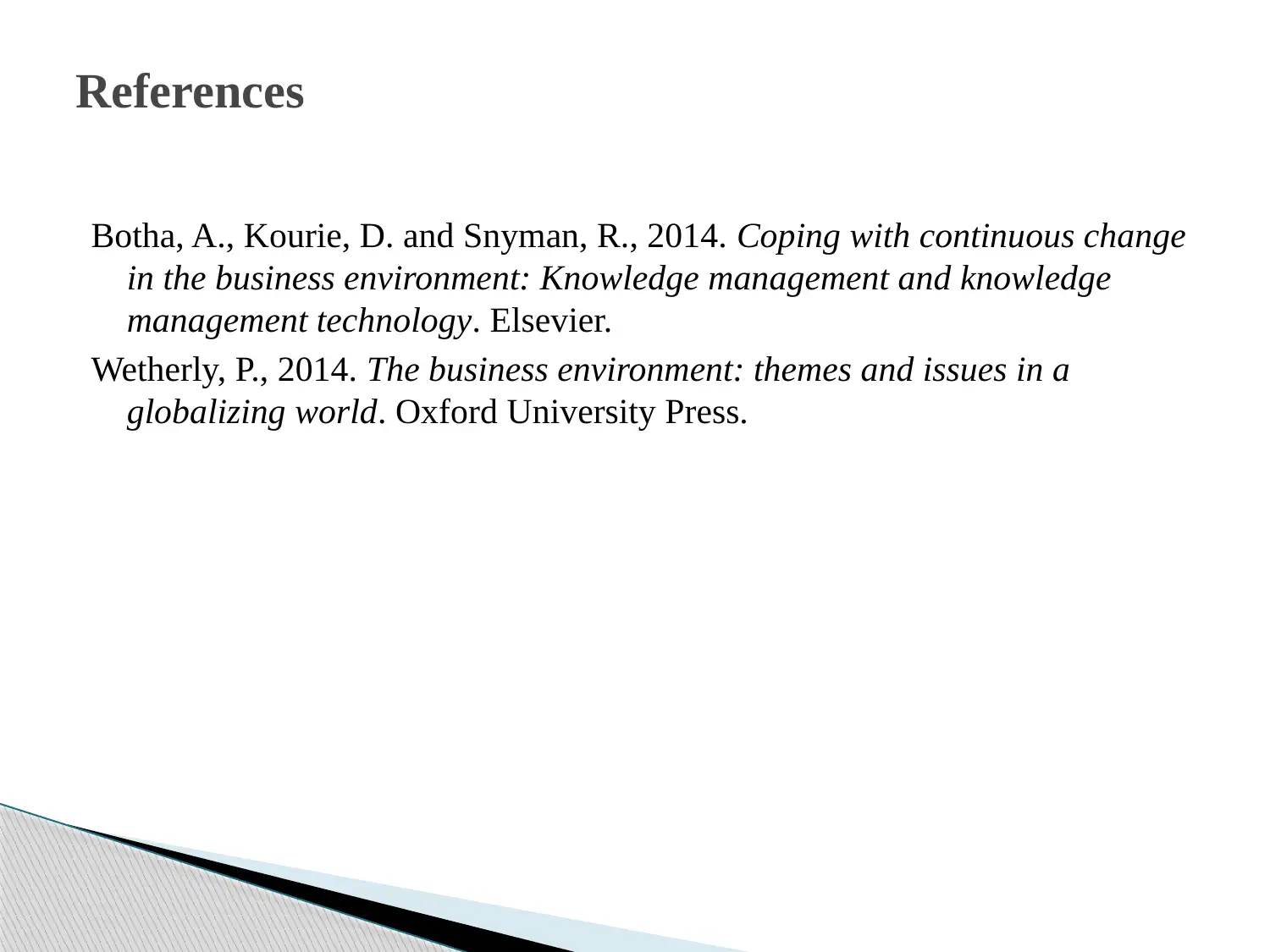






![[object Object]](/_next/static/media/star-bottom.7253800d.svg)